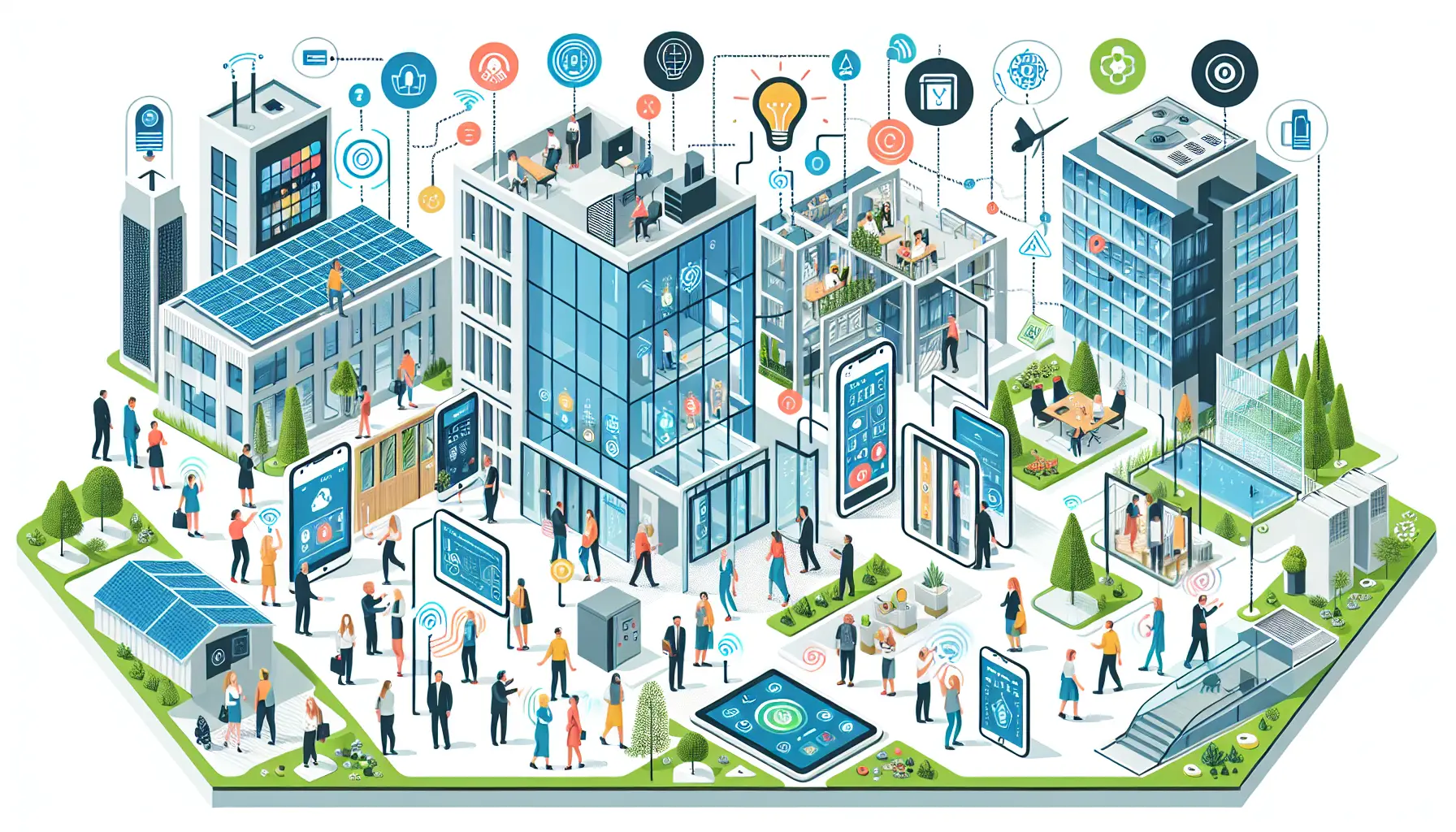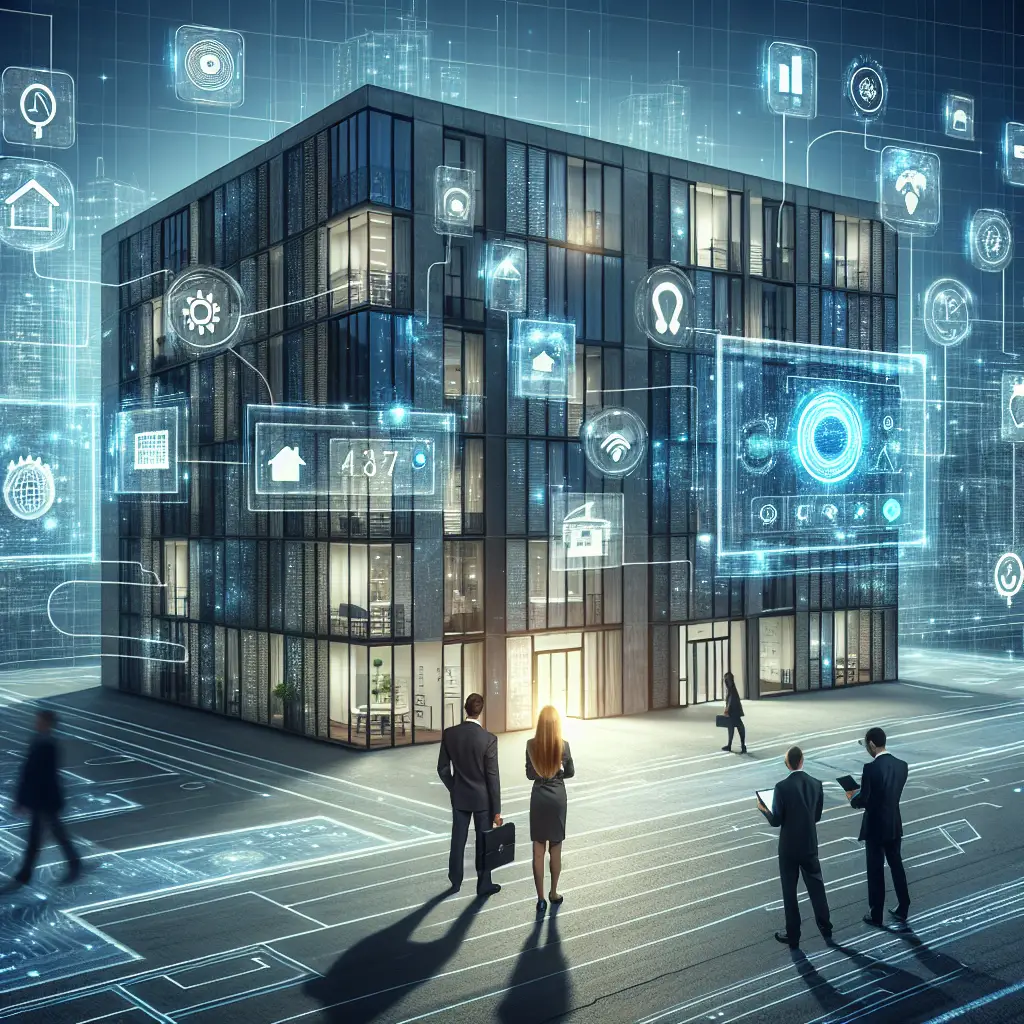The Many Facets of Smart Building Technologies
Smart building technologies represent a sophisticated integration of various systems and technologies designed to make buildings more efficient, sustainable, and responsive to the needs of their occupants. From the Internet of Things (IoT) to advanced data analytics, these technologies transform traditional facilities into dynamic ecosystems. In this article, we’ll explore the key components and benefits of smart buildings, the nuances of their implementation, and essential management strategies, all while highlighting Ratio Seven’s commitment to innovation in this domain.
Key Components of Smart Building Technologies
Internet of Things (IoT):
At the heart of smart buildings is the Internet of Things. IoT systems weave a network of interconnected devices through a common Internet Protocol (IP) platform. Devices like smart thermostats, lighting systems, and security cameras come equipped with sensors and microchips that enable seamless communication. This integration optimises building operations by dynamically regulating essential factors, such as temperature and lighting, based on real-time data.
Building Automation Systems (BAS) and Building Management Systems (BMS):
BAS and BMS play a crucial role in centralising the control of a building’s critical systems, including HVAC, lighting, and security. These systems monitor and manage variables like temperature, humidity, and electricity consumption, significantly enhancing energy efficiency while reducing operational costs. They also ensure that comfort levels for building occupants are consistently maintained, creating an environment that is both pleasant and productive.
Sensors and Data Analytics:
A smart building is only as effective as its sensors. These small devices collect invaluable data on conditions ranging from room occupancy and light levels to air quality and temperature. By harnessing advanced analytics and artificial intelligence, this data is converted into actionable insights, enabling facility managers to make informed decisions. This could include adjusting HVAC settings based on occupancy to minimise energy waste or identifying patterns that suggest the need for maintenance.
Integration with IT Infrastructure:
Smart buildings rely on the convergence of various systems into a single IT-managed network infrastructure. Technologies like Power over Ethernet (PoE) streamline power delivery to sensors, lighting, and security devices, offering greater flexibility and reduced operational costs. The integration represents a unified approach to managing different building systems, ensuring they work cohesively towards improved efficiency.
Benefits of Smart Building Technologies
The adoption of smart building technologies has far-reaching benefits that extend beyond the walls of individual facilities. These benefits touch on energy efficiency, occupant experience, safety, and sustainability.
Energy Efficiency:
Smart buildings excel in reducing energy consumption through optimisation. IoT and AI technologies automate the management of lighting and HVAC systems, ensuring they’re only used when necessary. For instance, smart shades may adjust to maximise natural light, while occupancy sensors ensure vacant spaces don’t waste energy. The result is a substantial reduction in power use, contributing to lower utility costs.
Enhanced Occupant Experience:
A significant advantage of smart buildings is the enhancement of occupant experience. With technologies designed to maintain optimal indoor air quality, comfortable temperatures, and appropriate lighting, these buildings boost wellbeing and productivity. Advanced smart lighting systems can adapt to natural light levels and occupant preferences, enhancing both comfort and energy savings.
Safety and Security:
Integrating safety and security is another domain where smart building technologies shine. They seamlessly connect with security systems like access control, fire alarms, and smoke detectors. Such integration allows automated activation of emergency protocols, notifying appropriate services in real-time and detecting unusual behaviour, such as vaping or unauthorised access.
Operational Efficiency:
Smart buildings simplify facility management by automating routine tasks and providing real-time data. This includes automating schedules for parking and workspace usage. Facility managers can obtain a granular view of the building’s operations, optimizing resource allocation and reducing downtime through predictive maintenance and efficient operations.
Sustainability:
Sustainability is a core focus in modern facility management, and smart buildings are at the forefront of these efforts. By integrating technologies like digital twins, which combine real-time data with virtual models, smart buildings enhance resource efficiency and sustainability. Ratio Seven is committed to advancing sustainable solutions within the smart building industry.
Implementation and Management
The journey towards a fully integrated smart building involves careful consideration of implementation and management aspects.
Network Connectivity:
Reliable network connectivity is vital to the functionality of smart building components. These systems can be connected via dedicated cabling, robust data networks, or flexible wireless networks. While wireless networks offer mobility, data networks with PoE support two-way communication effectively, ensuring a smooth operation of smart components.
Cybersecurity:
As smart buildings increasingly rely on data and interconnected systems, cybersecurity becomes paramount. Protecting these systems from cyber threats involves a multi-faceted approach, including regular training, advanced tools, and continuous network security improvements. Ratio Seven believes in robust, layered security systems to protect smart buildings and their occupants.
Exploring the Power of Smart Buildings with Ratio Seven
Each aspect of a smart building, from IoT to digital twins and beyond, represents a meaningful step towards a future where buildings are not just structures, but adaptive environments optimally aligned with the needs of their occupants. Ratio Seven continues to pave the way for smarter, more connected buildings that prioritise energy efficiency, occupant comfort, and overall sustainability.
Through comprehensive planning and innovative technology integration, Ratio Seven helps businesses navigate the complexities of turning their facilities into smart buildings. Our commitment to excellence ensures that organisations not only meet but exceed their energy efficiency and sustainability goals while optimising the experience of everyone within their walls.

Frequently Asked Questions
What is the primary function of smart building technologies?
Smart building technologies primarily enhance building efficiency by integrating various systems to work harmoniously. By leveraging IoT, AI, and data analytics, these technologies make buildings more sustainable, responsive, and comfortable for occupants. The overarching goal is to use resources optimally while maintaining high comfort and safety standards.
How do smart buildings improve energy efficiency and sustainability?
Smart buildings use advanced technologies like IoT and AI to monitor and manage energy consumption actively. By automating systems like lighting and HVAC based on occupancy and environmental data, they can significantly reduce energy waste. Furthermore, smart buildings often incorporate sustainable materials and renewable energy sources, bolstering their eco-friendly profile.
Why is cybersecurity important for smart buildings?
Cybersecurity is crucial because smart buildings rely on interconnected systems that handle sensitive data and critical building functions. A breach could compromise occupant safety, privacy, and the building’s operational integrity. Implementing strong cybersecurity measures ensures these systems remain secure against potential threats, maintaining their reliability and confidentiality.
How do smart buildings enhance occupant comfort and safety?
Smart buildings improve occupant comfort by maintaining optimal indoor conditions, such as air quality and lighting, automatically adjusting to real-time data. They enhance safety by integrating with security systems, ensuring rapid emergency response and detection of potential threats like fire and unauthorised access, and creating a secure environment.
What role does Ratio Seven play in the development of smart buildings?
Ratio Seven provides solutions that help businesses transform their facilities into smart buildings, addressing energy efficiency, occupant comfort, and security while meeting modern regulatory and environmental standards.
Through smart building technologies, we’re not only reshaping the physical landscape but also paving the way toward a sustainable, resource-efficient future. With companies like Ratio Seven spearheading these efforts, the transformation towards smarter living spaces continues to gain momentum, fostering environments that are not just built but intelligently designed to adapt and thrive.




